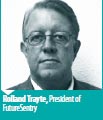INSIGHTS
Heightened aviation security since the 9/11 attacks and subsequent terrorist threats has brought along increased awareness, for danger can be detected or deterred before brought into the air.
As new airports continue to be constructed and existing ones upgraded, newer technologies like HD video surveillance, video content analysis and management software are gradually adopted to enhance the security and safety of complex airport and aviation operations. Security management of the entire premises is, thus, increasingly highlighted. One of the top challenges faced by system integrators today is assimilating new technologies and products into existing systems, as old and new systems often have trouble communicating with one another. However, should an airport project adopt technologies based on an open platform, integration would be much smoother, with extra cost minimized and existing investment extended.
Sky is the Limit: Airport Security Soaring into Smart Management
Date: 2011/07/04
Source: Camille Shieh
HD and VCA
Using HD video streaming can help extend the life of the existing analog cabling of an airport surveillance system while providing better forensic evidence and the zero latency needed for live monitoring using PTZ camera controls, Wilson Vertical Market said.
In airport security, the devil is indeed in the details. “HD delivers a wide-screen format that captures more useable image content, reducing the amount of empty sky or foreground in a scene if a wide-viewing angle is needed, such as at baggage claim areas,” Otterspeer said.
 Motion sensor technology has certainly improved and can now detect farther and more precisely than previous versions, said Rolland Trayte, President of FutureSentry. “Solar-powered wireless sensors offer simple installation and add the detection range to 1,000 feet. Advanced applications can also add analytics to further ensure robust detection and reliability of alarming inputs, and enable the system to ‘learn' the difference between uniquely shaped objects.”
Motion sensor technology has certainly improved and can now detect farther and more precisely than previous versions, said Rolland Trayte, President of FutureSentry. “Solar-powered wireless sensors offer simple installation and add the detection range to 1,000 feet. Advanced applications can also add analytics to further ensure robust detection and reliability of alarming inputs, and enable the system to ‘learn' the difference between uniquely shaped objects.”
Adoption of VCA for airport monitoring remains low, despite a visible growth in the last couple of years. “VCA is used in about less than 10 percent of airport projects currently, with potential to grow moderately to 15 to 20 percent in the next few years,” Harris said.
“Security standards are not in place yet to get this widely adopted in the market.” Actual applications, Otterspeer added, include line crossings for external perimeters and wrong-way or loitering detection for strategic locations such as air traffic control towers, customs gates and aircraft ramps. “VCA is used from site to site, depending on what the project requirements are,” Moscinski said. “Currently, simple analytics are used most often, as the technology still has several barriers to overcome, such as unsatisfactory hit ratios and high FARs. Simple VCA like motion and object detection can help identify when someone has crossed checkpoints from the nonsecurity to the security side, alarm relevant personnel and provide evidence to assist with tracking and identifying the intruder. We see the most active VCA evaluation now taking place for use in perimeter security.”
 Another key technology identified is ALPR, which is very common these days at Tier-1 (major) airports and is becoming increasingly common at Tier-2 and even some Tier-3 airports, said Jim Kennedy, President of Inex/Zamir. “The primary use is for parking revenue management to prevent ticketswapping fraud and subsequent revenue losses. Increasingly, we are requested to provide a ‘list-matching' capability to our system so that local authorities can be immediately notified if a vehicle that is on a watch list enters a specific parking facility.” The disappointment with VCA often stems from undelivered functions it promised in the beginning, Figueiredo said. “Many vendors are pushing less-than-ready VCA products out to customers to make quick cash even if the technology is still not mature enough for real-life usage, ultimately creating more problems for customers. The accuracy of VCA reading is, on average, 85 percent or better when utilized in a controlled environment with strategic camera position and correct lighting.”
Another key technology identified is ALPR, which is very common these days at Tier-1 (major) airports and is becoming increasingly common at Tier-2 and even some Tier-3 airports, said Jim Kennedy, President of Inex/Zamir. “The primary use is for parking revenue management to prevent ticketswapping fraud and subsequent revenue losses. Increasingly, we are requested to provide a ‘list-matching' capability to our system so that local authorities can be immediately notified if a vehicle that is on a watch list enters a specific parking facility.” The disappointment with VCA often stems from undelivered functions it promised in the beginning, Figueiredo said. “Many vendors are pushing less-than-ready VCA products out to customers to make quick cash even if the technology is still not mature enough for real-life usage, ultimately creating more problems for customers. The accuracy of VCA reading is, on average, 85 percent or better when utilized in a controlled environment with strategic camera position and correct lighting.”
HD, megapixel cameras and video analytics may provide improved inf o rma t i on and s i tua t i ona l awareness, but they introduce enormous operational costs in terms of bandwidth and storage requirements, and other issues such as forensic capability and privacy.